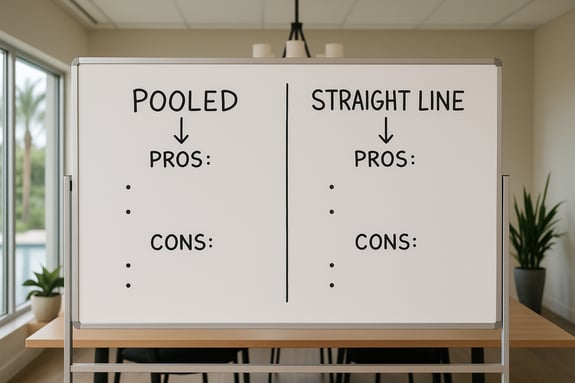This week’s word is Pooling.
The Florida Condominium Act requires an association to include a reserve schedule as part of the annual budget. Reserves must be set aside for painting of the building(s), roof replacement and any other item of association responsibility with a deferred maintenance or replacement cost of $10,000 or more.
There are two methods that can be used to calculate the required reserves for the reserve schedule: the straight line method and the pooled method, also known as the “cash flow” method.
The straight line method requires that each item (painting, roof replacement, etc.) has its own fund balance. When reserves are funded on the straight line method, the reserve funds for each item can only be used for their intended purpose. For example, money could not be taken from the roof reserve to pay for painting the building.
The cash flow method allows for a pool of money in the reserve fund, which is available for costs associated with any item in the reserve pool. For example, the painting and roof reserve monies are pooled into one fund and can be used for either item.
The pooling method gives the association more flexibility in funding repairs and replacements and should theoretically reduce the amount of funding required into the reserve fund. However, with this flexibility and potential reduction in owner contribution comes some risk. The straight line method is generally considered more conservative; however, a comparison of both methods for your community's reserve study can help you assess which approach is best for your association.


